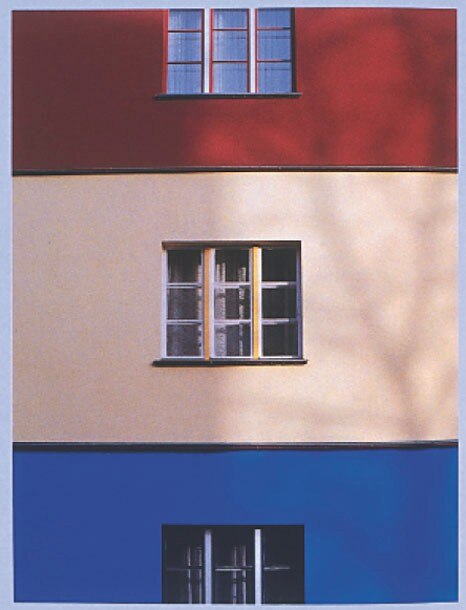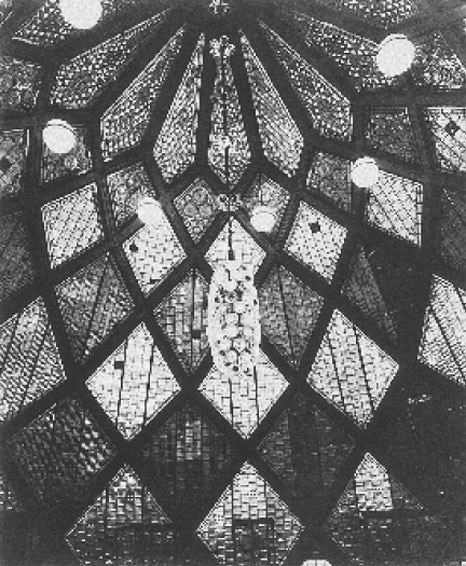Bruno Taut 1880-1938
Winfried Nerdinger, Manfred Speidel with Kristiana Hartmann and Matthias Schirren Electa, Milan, 2001 (436 pages, 103,29 euros)
On August 16, 1931, the fortnightly Plastic Arts published a front-page review by the architectural student Ernesto Rogers. The subject was Bruno Taut’s The New Architecture in Europe and America.
This young man immediately perceived the specific nature of the volume within the broader published debate on modern architecture. He cited Taut’s criticism of ‘the obsession with the ocean liner’ that had preoccupied Le Corbusier and many other architects of the time. ‘At first glance’, wrote Rogers, ‘Taut’s materialism could have been mistaken for Le Corbusier’s mechanism; but in reality the German’s architecture and ideas are far closer to life. Le Corbusier imitates machines in his works and is completely infatuated with dynamism; however, Taut insists – very rightly so in my opinion – on the idea that homes must utilise machines. Unlike the latter, every function has to be static (it is only too obvious that this is true from the constructional viewpoint). Houses have to be peaceful and protect us from the dynamism of machines and the turbine of the metropolis’.
The new master postulated a closer link between architecture and life and imagined the future of living ‘deeply rooted’ in tradition. But that very year, 1931, after what he called the ‘seven fat years’ (1924 to 1930), Taut was preparing for a trip that would lead him throughout the world spreading word of his teachings. He travelled to Russia, Japan and Turkey before he met his untimely death in 1938 at the age of 58. Let’s go back to 1931. On March 18 the Frankfurter Zeitung published the fourth and final article by Walter Benjamin on the imposing figure of Karl Kraus.
According to Benjamin, ‘The work of the amateur is innocent and pure; the master’s is destructive and purifying. Therefore, the inhuman is among us as the messenger of a more real humanism’. Also, ‘To understand the humanity that asserts itself in destruction one must have followed Loos’s struggle with the dragon of ornament, one must have heard the heavenly Esperanto of Scheerbart’s creatures or have discerned Klee’s new angel (the latter would prefer to free men by taking away from them what they have than make them happy by giving them what they want)’. Kraus understood this, as did Benjamin, yet the masters who followed Loos, listened to Scheerbart and saw Klee’s angelus novus included Bruno Taut as well. Both Taut and Benjamin expressed themselves in the double direction of, as Scholem put it, ‘mystical intuition and rational understanding’. Both Taut and Kraus were ‘on the eve of a new age’ (according to Loos) and ‘on the eve of Judgement Day’ (according to Benjamin).
A few years ago Manfredo Manfredini wrote an essay on The World Builder, the play Taut wrote in 1920; he maintained that ‘the theatrical nature of architecture was an interpretative paradigm for Taut’s designs’. In fact, Taut’s life constantly opened and closed the curtains on a single performance devoted to the people who inhabit the world. Taut, under his die gläserne Kette pseudonym, Glas, was also the very rationalist head of the Magdeburg Building Department and a sharp interpreter of the Japanese and Turkish architectural traditions. This is a full exploration of the multiple aspects of Taut’s life and work. It caps the studies commenced in 1970 by Kurt Junghanns and advanced in Germany through the work of Iain Boyd Withe, Kristiana Hartmann and Manfred Speidel (who wrote some of the pieces in this volume).
The Italian Gian Domenico Salotti, the organizer of a major 1987 international conference that did much to further understanding of the contribution of Taut, made some significant contributions. Hence Taut’s kaleidoscopic Weltanshauung, in all of its wonderful compositions, is presented and examined by scholars of diverse backgrounds. The book includes investigations of the best-known episodes of Taut’s career, addressing the ‘visionary’ lover of Scheerbart’s esoteric glass as well as the impassioned architect-cum-planner who built working-class districts. In addition, there are interesting essays on his training, theory and artworks; the role of interior space in his work; and a detailed examination of the three final stages of his dramatic exile. The result is a definitive publication on the works of Bruno Taut.
Besides assembling multiple perspectives on a key protagonist of 20th-century architecture, it strikes the final blows against interpretations that would place a person so rich in tradition and spirituality under the single, misleading banner of ‘machinist materialism’. Taut read the medieval mystics and studied the Japanese home to learn how to live. He designed polychromatic garden cities and dreamed of cathedrals in the Alps to offer the earth to heaven. He created the columns of the Ankara Theatre to pay homage to history – not because, as Martin Wagner said, he ‘could not find the road to the new’.
Taut was a Weltbaumeister, a world builder, in the realms of music and architecture, yet he was fully cognizant of the ‘destructive, purifying’ destiny of his own work. This is why, as in his play, he stays backstage, leaving the stage to his angels. Klee’s angelus novus appears, gazing at the past it is leaving and turning its back on the future from which it comes.
And, above all, there are Scheerbart’s angels: after having awakened humankind, filled the globe with fantastic structures and punished the evildoers, ‘they replace the buildings, put their gloves back on, take their cathedrals in their arms and fly away’.
Federico Bucci, professor of the history of contemporary architecture at Milan Polytechnic





